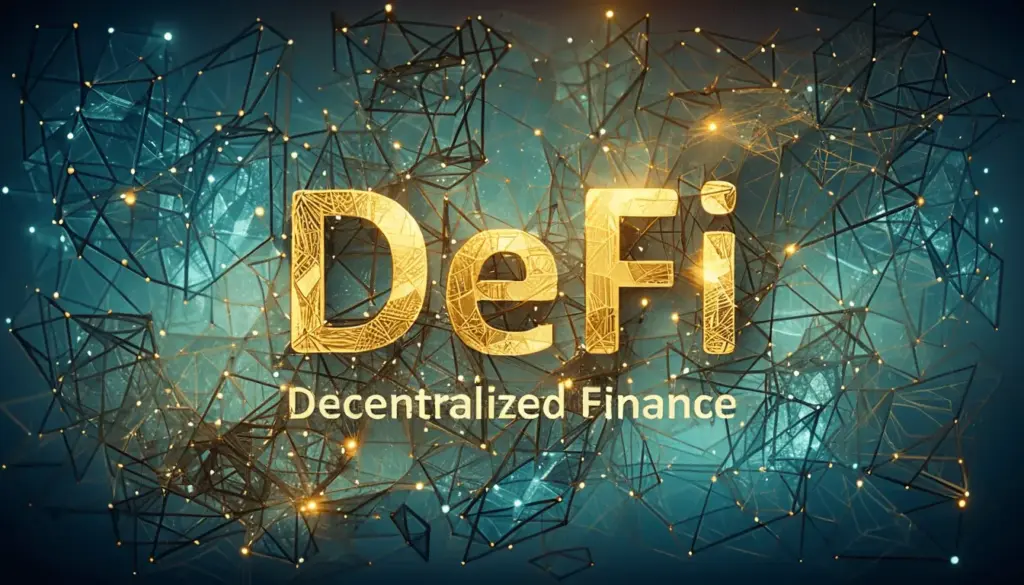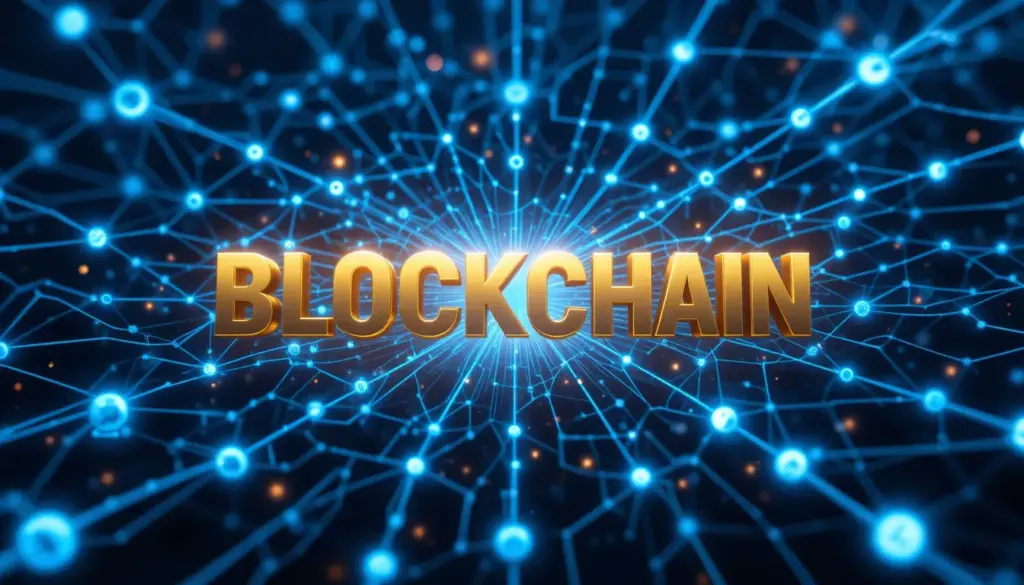The concept of Decentralized Finance (DeFi) first gained significant traction in 2017 with MakerDAO’s launch of Ethereum-based lending and borrowing services utilizing smart contracts. Over the past few years, DeFi has experienced explosive growth, emerging as a powerful catalyst for fundamental change within the traditional financial system. Breaking free from the constraints of traditional banking – cumbersome processes, complex paperwork, and high fees – the movement towards a transparent and efficient new financial paradigm is now an unstoppable force. This article delves into the core concepts of DeFi, its key technologies, prominent projects, current market status, and future prospects.

Understanding DeFi: The Core Concepts and Key Features
✅ Decentralization: Spearheading a Financial Revolution
DeFi (Decentralized Finance) fundamentally refers to a financial system built on blockchain technology, operating without the control of central authorities. Unlike traditional finance, which relies on intermediaries like banks and brokerage firms, DeFi leverages automated contracts known as smart contracts to enable transparent and secure peer-to-peer financial transactions. This offers numerous advantages, including reduced intermediary fees, faster transaction speeds, and increased financial accessibility, acting as a crucial driver in the democratization of finance.
✅ Key Advantages of DeFi
- Decentralization: Operates without a central point of control, enhancing censorship resistance and distributing system failure risks.
- Transparency: All transaction records are publicly accessible on the blockchain, fostering high levels of trust and auditability.
- Openness: Anyone can access and participate in DeFi services without permission, promoting financial inclusion.
- Interoperability: Various DeFi protocols and services can interact with each other, leading to the creation of novel financial products and services.
- Automation: Smart contracts automate transactions and financial processes, maximizing efficiency.
The Foundational Technologies Driving DeFi: Blockchain and Smart Contracts
✅ Blockchain: Building the Foundation of Trust
At the heart of DeFi lies blockchain, a distributed ledger technology. Blockchain secures data integrity and immutability by bundling transaction data into blocks, which are then recorded and managed through consensus among a distributed network of participants. This technology enables DeFi to provide a secure and transparent financial environment without the need for central intermediaries.
✅ Smart Contracts: Automating Financial Transactions
Smart contracts are self-executing code snippets that automatically execute transactions when predefined conditions are met. Primarily utilized on blockchain platforms like Ethereum, smart contracts automate various financial services such as lending, borrowing, and swapping without the need for intermediaries. The advent of smart contracts has allowed DeFi to overcome the inefficiencies of traditional financial systems, offering users a more convenient and efficient financial experience.
Leading DeFi Projects: Pioneers of Innovation
Having explored the underlying technologies and characteristics of DeFi, let’s now examine the key projects driving actual financial innovation. We will categorize these into three main areas: Decentralized Exchanges (DEXs), Lending and Borrowing Platforms, and Innovative DeFi Protocols, analyzing notable services and their associated cryptocurrencies.
✅ Decentralized Exchanges (DEXs): Unintermediated and Free Trading
Decentralized Exchanges (DEXs) are cryptocurrency trading platforms that operate without a central authority, relying on smart contracts. Users can directly connect their wallets to conduct peer-to-peer (P2P) trades securely and transparently. They can also earn trading fee revenue by providing liquidity.
- Uniswap (UNI): A leading Automated Market Maker (AMM) protocol where users deposit assets into liquidity pools and earn a share of trading fees. It supports numerous cryptocurrency pairs and offers an intuitive interface suitable for beginners.
- SushiSwap (SUSHI): A DEX that originated as a fork of Uniswap, offering its native SUSHI token for governance participation and additional earning opportunities. It provides a wide range of features, including diverse liquidity pools and margin trading, and boasts an active community.
- PancakeSwap (CAKE): A prominent DEX built on Binance Smart Chain (BSC), known for its low fees and fast transaction speeds. Beyond swaps and liquidity provision, it offers staking, a Non-Fungible Token (NFT) marketplace, and other DeFi services, attracting a high level of user engagement.
✅ Lending and Borrowing Platforms: Unlocking New Financial Possibilities
DeFi lending and borrowing platforms enable users to borrow cryptocurrency assets by providing collateral or earn interest by lending their crypto to other users. Smart contracts automatically manage loan terms, repayment conditions, and interest rates, facilitating efficient and transparent financial activities.
- Aave (AAVE): A leading platform offering lending and borrowing services for a wide range of cryptocurrency assets. It provides both variable and fixed interest rate options, along with innovative features like flash loans. Its diverse collateral options and stable protocol operation have earned it high trust within the community.
- Compound (COMP): An algorithmic interest rate protocol that creates cryptocurrency lending and borrowing markets. Interest rates adjust automatically based on asset supply and demand, and lenders earn cTokens, interest-bearing tokens representing their deposited assets. It sees significant participation from institutional investors and serves as a key indicator for DeFi interest rate markets.
- MakerDAO (MKR): A Decentralized Autonomous Organization (DAO) responsible for issuing and managing the DAI stablecoin. Users can generate DAI by collateralizing various cryptocurrencies like ETH. The MKR token is used for governance and system stabilization. As a decentralized stablecoin issuer, MakerDAO plays a crucial role in the DeFi ecosystem.
✅ Innovative DeFi Protocols: Designing the Future of Finance
The DeFi ecosystem continuously introduces new protocols based on innovative ideas, offering novel financial services and investment opportunities that were unimaginable in traditional finance, thereby expanding the potential of DeFi.
- Curve (CRV): A decentralized exchange designed for efficient swaps between stablecoins and pegged assets. It offers low slippage and high liquidity, making it advantageous for large-volume trades. The CRV token allows for governance participation and boosted yields.
- Balancer (BAL): An AMM protocol that supports the creation of customizable liquidity pools. Users can create pools with their own asset ratios and fee structures, earning BAL tokens for governance and incentives. It enables diverse investment and liquidity provision strategies.
- Yearn Finance (YFI): A yield optimization platform that automatically seeks the highest returns across various DeFi protocols. Users deposit assets, and yearn.finance’s smart contracts automatically move these assets to the protocols offering the best yields, maximizing compound interest.
DeFi Market Status and Future Outlook: An Irreversible Trend
✅ The Rapidly Expanding DeFi Market
The DeFi market has demonstrated remarkable growth over the past few years. The Total Value Locked (TVL) in DeFi surged from approximately $1 billion in early 2020 to over $130 billion by December 2024. This indicates that DeFi is transitioning from a mere experiment to a robust alternative to the mainstream financial system. Notably, increasing participation from institutional investors is expected to further accelerate market growth.
✅ Future Prospects and Challenges for DeFi
The DeFi market is projected to continue its upward trajectory. The integration of DeFi with other innovative technologies like Artificial Intelligence (AI) and the Internet of Things (IoT) could lead to the emergence of even more sophisticated financial services. Furthermore, the incorporation of tokenized Real World Assets (RWAs) into DeFi is poised to be a significant factor in expanding the market’s scale.
However, several challenges need to be addressed for DeFi to achieve full mainstream adoption. Security vulnerabilities in smart contracts, regulatory uncertainties, and the complexity of user interfaces can hinder wider acceptance. Therefore, continuous advancements in technical security, the establishment of clear regulatory frameworks, and the development of user-friendly services are crucial for the sustained progress and growth of the DeFi ecosystem.
In Conclusion
We have explored the concept and characteristics of Decentralized Finance (DeFi), its key technologies, prominent coin projects, and the current market status and future outlook. Driven by core values of decentralization, transparency, and openness, DeFi is spearheading an innovation of the traditional financial system and has already established itself as an undeniable and powerful trend.
While the DeFi market is still in its early stages and faces certain challenges, the ongoing advancements in blockchain technology assure us that DeFi will mature into an increasingly robust and stable financial system. In the future, we can anticipate experiencing a more free and efficient financial landscape through DeFi. Now that Pandora’s Box has been opened, continuously paying attention to and actively engaging with the remarkable changes brought about by DeFi will be a prudent approach to understanding and leading the future financial market.


